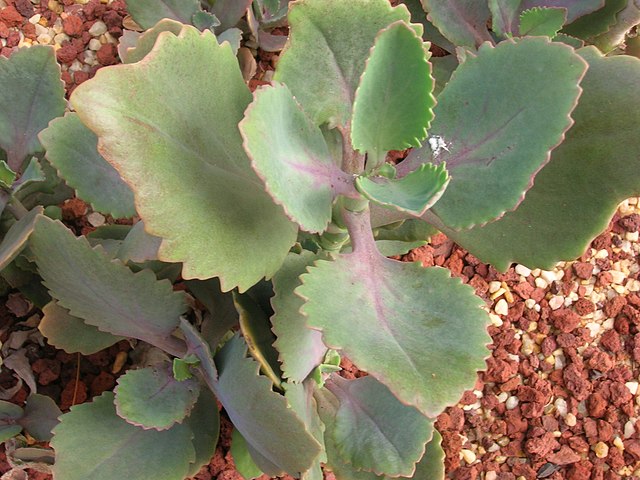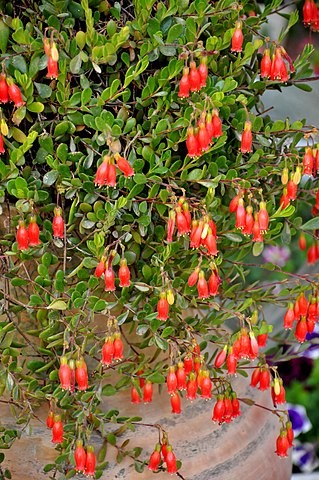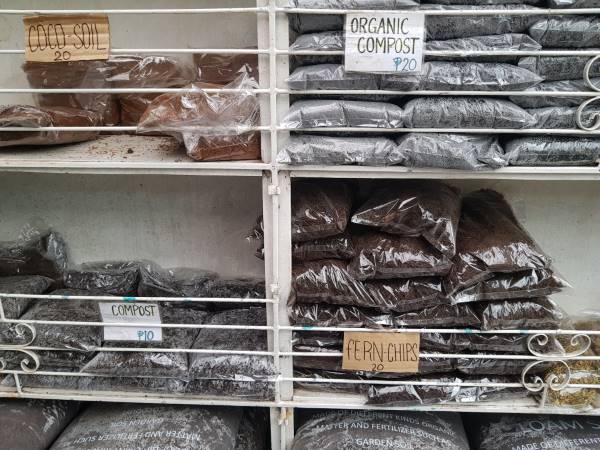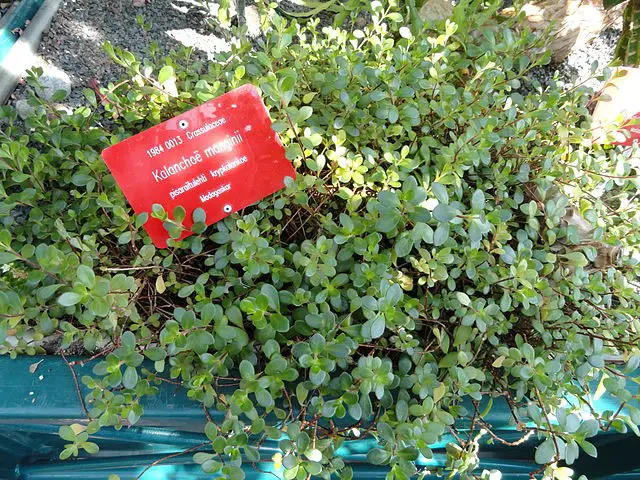Kalanchoe longiflora, also known as the “Candle Plant,” is a beautiful succulent that originates from Madagascar. This plant features long, narrow, greyish-green leaves that grow up to 15cm in length. The leaves are fleshy and have a slightly curved shape, with a pointed tip and a serrated edge. The plant can grow up to 30cm in height and produces long, slender stems with clusters of small, tubular flowers at the tips. The flowers are usually pink or lavender in color and have a waxy texture. When in bloom, Kalanchoe longiflora is a beautiful addition to any succulent collection or garden.
Watering
Like most succulents, Kalanchoe longiflora prefers infrequent watering. The plant should be allowed to dry out completely between waterings. During the growing season, which is typically from spring to fall, water the plant once every two weeks. In the winter, reduce watering to once a month. Be sure to use well-draining soil and a pot with drainage holes to prevent root rot.
Propagating
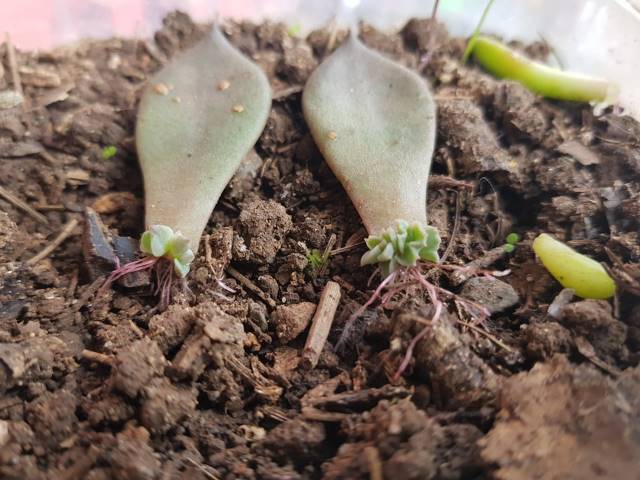
Kalanchoe longiflora can be propagated from stem cuttings. Simply take a cutting from the parent plant, allow it to dry out for a day or two, and then plant it in well-draining soil. Keep the soil moist but not waterlogged and place the cutting in a bright, indirect light. Roots should start to form in about 2-3 weeks. Once the new plant has developed a strong root system, it can be transplanted into a larger pot.
Sun Requirements
Kalanchoe longiflora is a hardy succulent that can thrive both indoors and outdoors. Here are some tips on where to plant Kalanchoe longiflora:
- Indoors: Kalanchoe longiflora can be grown indoors in a brightly lit location, such as a south-facing window. It prefers warm temperatures and can tolerate low humidity, making it an excellent choice for dry indoor environments. When planting indoors, choose a pot with drainage holes and use a well-draining soil mix. Place the plant near a window to ensure it receives adequate sunlight.
- Outdoors: Kalanchoe longiflora can also be grown outdoors in a sunny location with well-draining soil. It’s a great choice for rock gardens, xeriscapes, and other low-maintenance landscaping designs. When planting outdoors, choose a location with good drainage and full sun exposure. Make sure to plant Kalanchoe longiflora in a raised bed or container if your soil is heavy or poorly draining.
- Containers: Kalanchoe longiflora can be grown in containers both indoors and outdoors. Choose a pot with drainage holes and use a well-draining soil mix. When planting in a container, be sure to choose a size that allows for plenty of root growth, and avoid overwatering by allowing the soil to dry out between waterings.
Overall, Kalanchoe longiflora is a versatile plant that can thrive in a variety of growing conditions. Whether you’re planting it indoors or outdoors, make sure it receives plenty of sunlight and well-draining soil to promote healthy growth.
Soil and Pots Needed
Kalanchoe longiflora, like many succulents, requires well-draining soil that allows water to pass through easily to prevent root rot. Here are some recommendations for the type of soil to use for Kalanchoe longiflora:
- Cactus soil: A high-quality cactus soil is an excellent choice for Kalanchoe longiflora. It’s specifically designed to provide excellent drainage and aeration, and it’s often made with ingredients like sand, perlite, and vermiculite.
- Succulent soil mix: A succulent soil mix is another good option for Kalanchoe longiflora. These soil mixes are similar to cactus soil but may contain additional ingredients like coconut coir or peat moss to help retain moisture.
- DIY soil mix: If you prefer to make your own soil mix, you can mix together equal parts of sand, perlite, and peat moss. This will create a well-draining soil that’s ideal for succulents like Kalanchoe longiflora.
No matter which type of soil you choose, be sure to plant Kalanchoe longiflora in a pot with drainage holes to ensure excess water can easily escape. Additionally, it’s important to allow the soil to dry out between waterings to prevent overwatering and root rot.
Fertilizing
Kalanchoe longiflora does not require frequent fertilizing. A balanced fertilizer can be applied once a month during the growing season to encourage healthy growth. Be sure to follow the manufacturer’s instructions for dosage and application.
Pests and Diseases
Kalanchoe longiflora is generally resistant to pests and diseases. However, overwatering can lead to root rot and other fungal infections. Mealybugs and scale insects can also infest the plant. If you notice any signs of infestation or disease, remove the affected parts of the plant and treat it with a natural insecticide or fungicide.
There are several natural insecticides and fungicides that can be used to treat pests and diseases on Kalanchoe plants, including Kalanchoe longiflora. Here are some examples:
- Neem oil: Neem oil is a natural insecticide that is effective against a wide range of pests, including mealybugs and scale insects. It can also be used as a fungicide to prevent and treat fungal infections.
- Insecticidal soap: Insecticidal soap is a non-toxic, biodegradable insecticide that is effective against soft-bodied insects like aphids and spider mites. It works by disrupting the insect’s cell membranes, causing them to dehydrate and die.
- Copper fungicide: Copper fungicides are effective against a wide range of fungal infections, including powdery mildew and leaf spot. They work by inhibiting the growth of fungal spores and preventing them from spreading.
- Baking soda: Baking soda is a natural fungicide that can be used to treat powdery mildew on Kalanchoe plants. Mix one tablespoon of baking soda with one gallon of water and spray the solution onto the affected leaves.
- Garlic: Garlic is a natural insecticide that can be used to repel pests like aphids and spider mites. Crush a few cloves of garlic and mix them with water, then spray the solution onto the plant.
Kalanchoe Longiflora Blooming
Kalanchoe longiflora is a beautiful succulent that produces stunning pink, bell-shaped flowers. The plant blooms in the winter or early spring, depending on the growing conditions.
The flowers of Kalanchoe longiflora grow on tall stems that can reach up to 60cm in height. The individual flowers are pink, tubular in shape, and have a delicate, sweet fragrance. They typically bloom in clusters, creating a showy display of pink blooms.
To encourage Kalanchoe longiflora to bloom, it’s important to provide it with the right growing conditions. The plant requires plenty of sunlight to trigger blooming, so make sure it’s planted in a location that receives at least six hours of direct sunlight per day. Additionally, make sure the plant is well-watered and fertilized during the growing season to promote healthy growth.
Once Kalanchoe longiflora blooms, the flowers can last for several weeks before fading. To prolong the blooming period, remove any dead or faded flowers and provide the plant with the right growing conditions. Kalanchoe longiflora can also be encouraged to bloom again by allowing it to go through a period of dormancy in the fall. During this time, reduce watering and stop fertilizing the plant to encourage it to rest and prepare for the next blooming season.
Conclusion
Kalanchoe longiflora is an excellent choice for anyone looking to add a low-maintenance, beautiful plant to their collection. With proper care, this succulent can thrive and produce stunning blooms for years to come.

